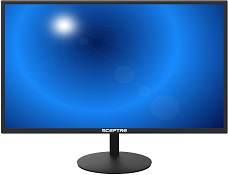What is an anti-glare screen?
The term glare is used to define a reflection from a reflective surface (such as a display or a mirror) that makes it hard to see what is happening on said surface. So an anti-glare screen is a special type of screen that includes a layer of coating that reduces reflections (making the screen a non-reflective surface).
The effectiveness of an anti-glare screen depends on the haze value and the type of screen surface your screen makes use of (either matte or glossy).
Benefits and Drawbacks
A major benefit of using an anti-glare screen, other than it reducing reflections, is that it is very simple and easy to clean. Due to the fact that the screen has a layer of coating on it, smudges or fingerprints don’t get on the glass and so water and a soft cloth is all that is needed to make the screen shine like it’s new (the following article can guide you on how to properly clean your screens). In addition the anti-glare coating helps bring out more color, making them more vibrant, in strong lighting in comparison to a normal screen. Lastly these types of screens are better for gaming and watching movies as glare can be a major source of annoyance during movie watching and gaming plus it reduces the visibility of dust or dirt on your screen so you don’t have to deal with grime.
However anti-glare screens do come with disadvantages of their own. The biggest disadvantage being that anti-glare displays are expensive as this feature is usually available on mid to high end electronic devices. Furthermore anti-glare displays aren’t recommended for professional editing as anti-glare screen trade of color accuracy for more vibrant colors (so if you wish to edit professionally, an IPS mossy display in a dark environment will be the best fit for you). Where anti-glare displays are easy to clean, they however require a soft microfiber cloth for cleaning as an old cloth or tissue can cause the anti-glare coating to wear off and while anti-glare screens do reduce the visibility of dust and dirt, they do however tend to show fingerprint or smudges more prominently, meaning they require cleaning more frequently and carefully.
To answer the question of which screen type would be best for you is that it all depends on the type of work you intend on doing on the screen and where you intend on doing it. If it’s normal day to day tasks then an anti-glare screen would do you great and similarly if you intend on doing it in a bright environment an anti-glare display would be the most helpful.

